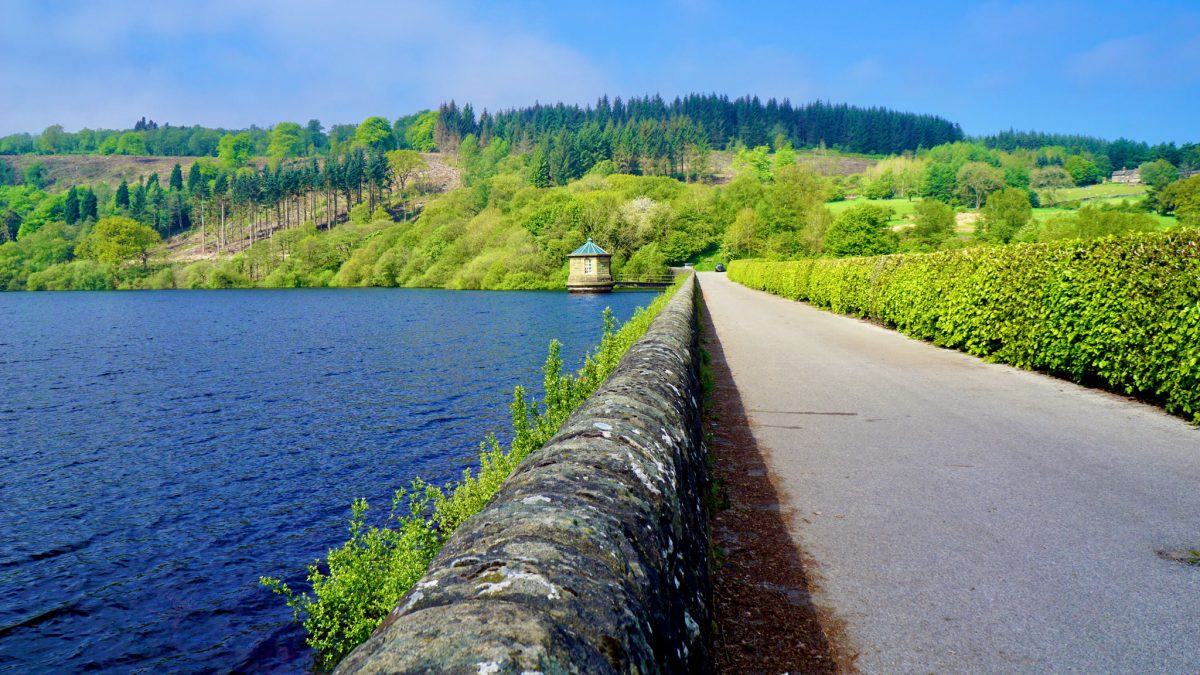Escaping to the spectacular Goyt Valley reservoirs via canal and quieter roads, a superb gravel fire track through the forest leads to the challenging Pym Chair climb, a thrilling descent past Windgather Rocks and the enchanting hamlet of Taxal.
Route details
- Distance
 17.6 miles / 28.3 km
17.6 miles / 28.3 km - Elevation Gain
 588 m / 1930 ft
588 m / 1930 ft - Time allow 2 hours
- Difficulty
 Challenging
Challenging - Suited to
 Gravel Bike
Gravel Bike  Hybrid Bike
Hybrid Bike  Mountain Bike
Mountain Bike - Notes Some moderate gravel tracks and broken tarmac, one short bumpier farm track. Road Bikes: can follow alternative route skipping these sections.
- Suggested Start New Mills SK22 3EZ SJ 9976 8489
- Places Bugsworth Basin, Buxworth, Cheshire, Cheshire East, Derbyshire, Fernilee, Furness Vale, Goyt Valley, High Peak, Kettleshulme, New Mills, Newtown, Pym Chair, Whaley Bridge, Windgather Rocks
- Attributes Accessible by train, Bridges, Canals, Car parking, Circular loop, Ideal for electric bikes, Industrial heritage, Out and back, Pocket Guide available, Pubs and cafés, Reservoirs, Steep climbs, Towns and villages, Views of hills and peaks, Views of open countryside, Views of towns and cities, Woodlands and forests
How to unlock
Support the website for £10 to access everything…
Become a Peaks & Puddles Plus supporter for a one-off contribution and you’ll get access to all these exclusive extra pages — plus downloadable, phone-friendly Pocket Guides and over 70 GPX navigation files to take along for the ride.

Peaks & Puddles Plus
• All Plus route pages
• GPX Collection: over 70 navigation files
• Pocket Guides: 10 downloadable, printable guides to the most popular routes
For a one-off contribution, supporting my work and website running costs.
What you’ll receive
You’ll be provided immediately with the link to a hidden page where all these extra downloads and guides (marked Plus) can be accessed. Return any time to access new and updated content just thanks to that single contribution. As an extra bonus, I’ve made sure Plus guide pages are completely ad-free.
Thanks for your support!
I’m reserving these original routes and extra pages exclusively for supporters. The one-off contribution supports my work and website costs, with miles of cycling inspiration in return. This online guidebook is still growing, I’m nowhere near done yet, so it’s a great investment in my future plans. Thank you!
Anthony
Original photography, words and design by Anthony Sheridan unless indicated otherwise. Found this guide helpful? Buy me a coffee to help keep the wheels turning!
The all-important disclaimer: While great care and attention has been put into gathering these routes, ensuring details are accurate and determining their suitability, all information should be used as a guide only and is not a replacement for using your own judgement or research when setting out on new adventures. Peaks & Puddles/the author cannot be held responsible for any issues that may arise from the riders own decision to ride a section of indicated route.
Always ensure your equipment is safe and legal for use and that you are well prepared, carrying everything necessary including access to a good map. Follow the Highway Code and the Countryside Code at all times. Respect the landscape, the wildlife and the people you encounter. And after all that, have fun!

